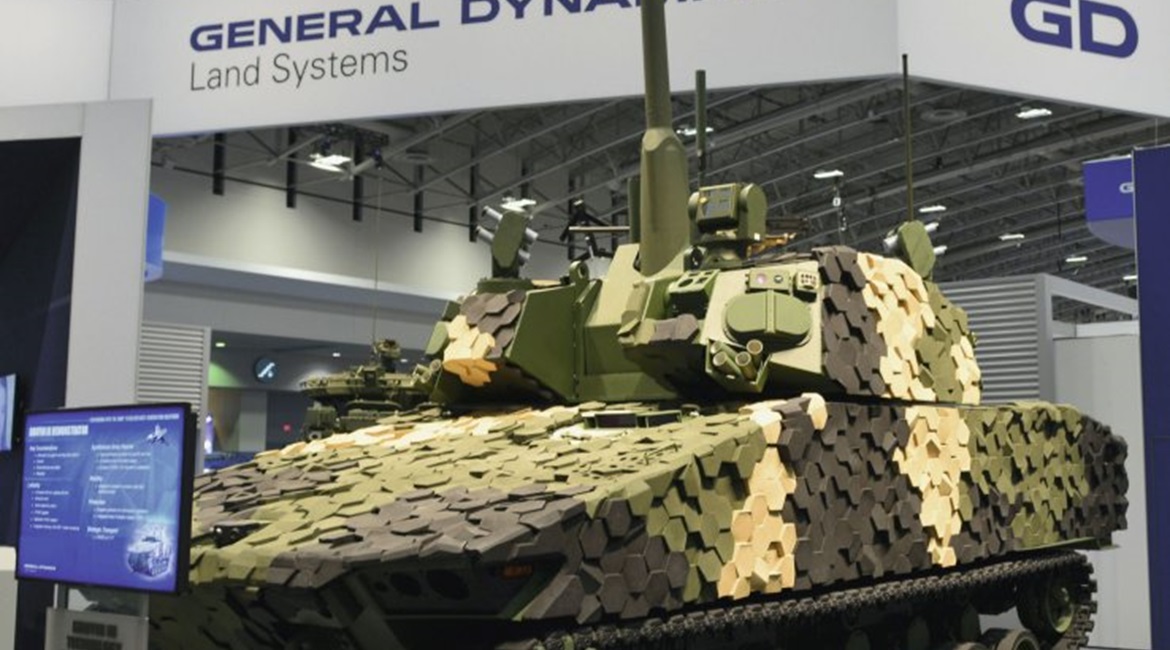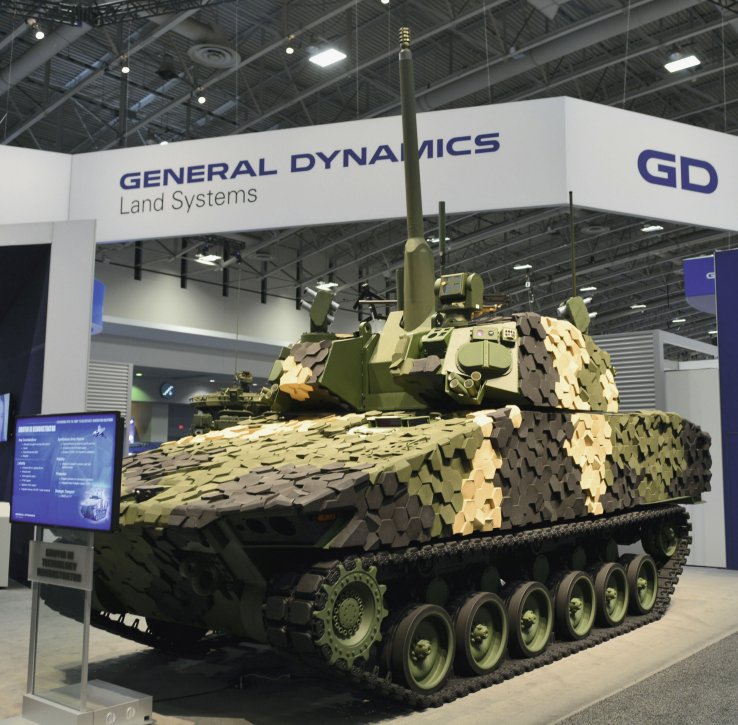
In its bid to replace the M2 Bradley Fighting Vehicle, the US Army released its final Optionally Manned Fighting Vehicle (OMFV) solicitation, and it is making a variety of technology trade-offs to avoid past acquisition missteps.

At AUSA 2018, GDLS displayed its Griffin III infantry fighting vehicle (IFV) technology demonstrator. While this vehicle does not represent the company’s OMFV bid, at the time GDLS said it does incorporate many features that it believes the US Army is looking for in the future vehicle. (IHS Markit/Patrick Allen)
On 29 March, the service released its OMFV request for proposal (RFP) and called for industry to deliver prototype vehicles, dubbed “bid samples”, to the service by 1 October. Just days earlier, Brigadier General Ross Coffman, director of the Next-Generation Combat Vehicle (NGCV) modernisation, briefed reporters about some of the difficult requirement decisions the service made to ensure that its OMFV goals are not too lofty.
“We’ve had to receive [industry] feedback and then write the requirements of what is obtainable, because we went to school on our past failures,” Brig Gen Coffman said at the AUSA Global Force Symposium & Exposition in Huntsville, Alabama.
The one-star general said the army has been meeting with industry to determine what is “obtainable” for moving out with the OMPV and then used feedback to tweak the requirements when it comes to balancing lethality, survivability, and mobility.
“In each of those areas, the collective industry said, ‘We can do anything you ask in this draft RFP individually, but when you put it together, we’re not going to be able to meet the transportability of this system,’” Brig Gen Coffman explained.
Looking to read the full article?
Gain unlimited access to Janes news and more...






